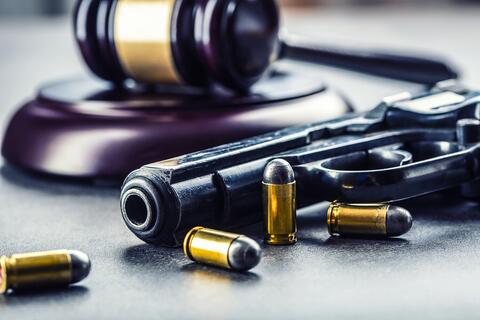A state grand jury voted today not to file any criminal charges at the conclusion of its deliberations regarding the death of Jimmy L. Testa, 31, of the Leesburg section of Maurice River, who was fatally shot by a New Jersey State Trooper in November during a violent struggle in which Testa armed himself with a steel pipe.
The shooting was investigated by the Attorney General’s Shooting Response Team, made up of investigators from the Division of Criminal Justice and the New Jersey State Police Homicide Unit. After hearing testimony and evidence from the team’s investigation, the state grand jury voted “no true bill,” meaning it declined to indict the law enforcement officer who shot Testa.
The incident began shortly after midnight on Nov. 6, 2016, when dispatchers received a 911 call from a resident reporting a burglary in an unoccupied house at 147 High Street in the Leesburg section of Maurice River. Two troopers from the Port Norris barracks of the New Jersey State Police responded to the location.
The trooper who ultimately shot Testa, “Trooper 1,” went to the rear of the unoccupied house. He shined a flashlight into a second floor window and saw someone inside. He announced “State Police” and ordered the person to come out of the building. Trooper 1 then kicked in a rear door of the house. Testa subsequently ran out of the house at Trooper 1 and a struggle ensued.
The second trooper, “Trooper 2,” heard the bang when the door was kicked and ran to the rear of the house to aid Trooper 1 in subduing Testa. Trooper 2 took Testa to the ground, but Testa continued to struggle and broke free, running across the street to a backyard littered with junk. The troopers pursued him and radioed for assistance. They saw that Testa was carrying a black object in his hand, later determined to be a flashlight.
In the “junkyard,” Trooper 2 again took Testa to the ground and tried to handcuff him, but Testa continued to struggle, despite commands from both troopers to stop resisting. The troopers used various forms of escalating force in an attempt to subdue Testa, including punches, elbow blows, and flashlight blows to the head and torso by Trooper 2, who had lost his expandable baton in the confrontation.
Trooper 1 sprayed Testa with pepper spray, but Testa continued to struggle hard, getting up each time the troopers took him to the ground and tried to hold him down.
Near the end of the struggle, which continued for over three minutes, Testa grabbed a heavy steel pipe from the ground. Trooper 2 warned Trooper 1 about the pipe and tried to push Testa’s arm with the pipe to the ground.
Both troopers reported that they were completely exhausted and feared Testa would get the arm holding the pipe free, in which case he might strike and kill one or both of them, since Testa still had the strength to struggle violently against them. They warned Testa to stop, but he did not comply. He was rising up again, armed with the pipe, when he was shot. Trooper 1 was behind Testa, struggling to hold onto him, as Testa got up on all fours with the pipe in his hand. Trooper 1, holding his service weapon near his own hip, fired a single shot into Testa’s back to stop him. Testa stopped struggling and was handcuffed.
The troopers radioed “shots fired” and called for EMS. They administered medical assistance by applying pressure to the gunshot wound.
Additional troopers arrived and attempted medical aid until EMS arrived and took over. Testa was pronounced dead at the scene. The two troopers were treated at Inspira Medical Center in Elmer for cuts and abrasions. The steel pipe Testa wielded was recovered next to his body.
An autopsy revealed he died from a single gunshot wound.
No drugs or alcohol were detected in his blood.
After considering the facts, evidence and testimony from the investigation by the Attorney General’s Shooting Response Team, the state grand jury voted not to return an indictment.
An officer may use deadly force in New Jersey when the officer reasonably believes it is immediately necessary to protect the officer or another person from imminent danger of death or serious bodily harm.
In New Jersey, all investigations into police deadly force incidents are governed by an Attorney General directive – issued in 2006 and strengthened in 2015 – which establishes strict procedures for conducting those investigations. When a state- or county-level officer uses deadly force, the case is investigated by the Attorney General’s Shooting Response Team, made up of deputy attorneys general and detectives of the Division of Criminal Justice, as well as detectives of the State Police Homicide Unit, all of whom operate independently of their usual chain of command and report directly to the Director of the Division of Criminal Justice or a designee.
